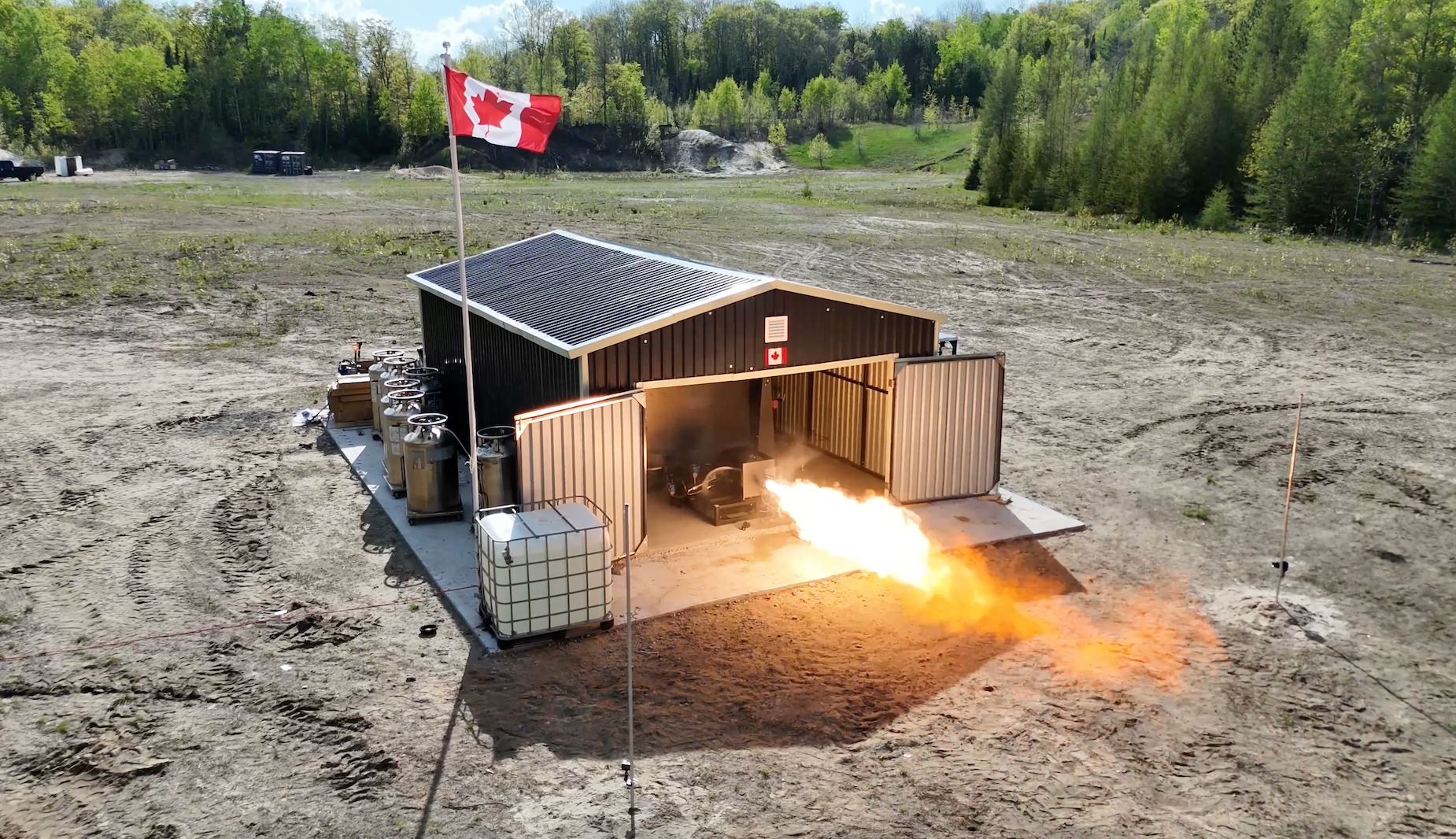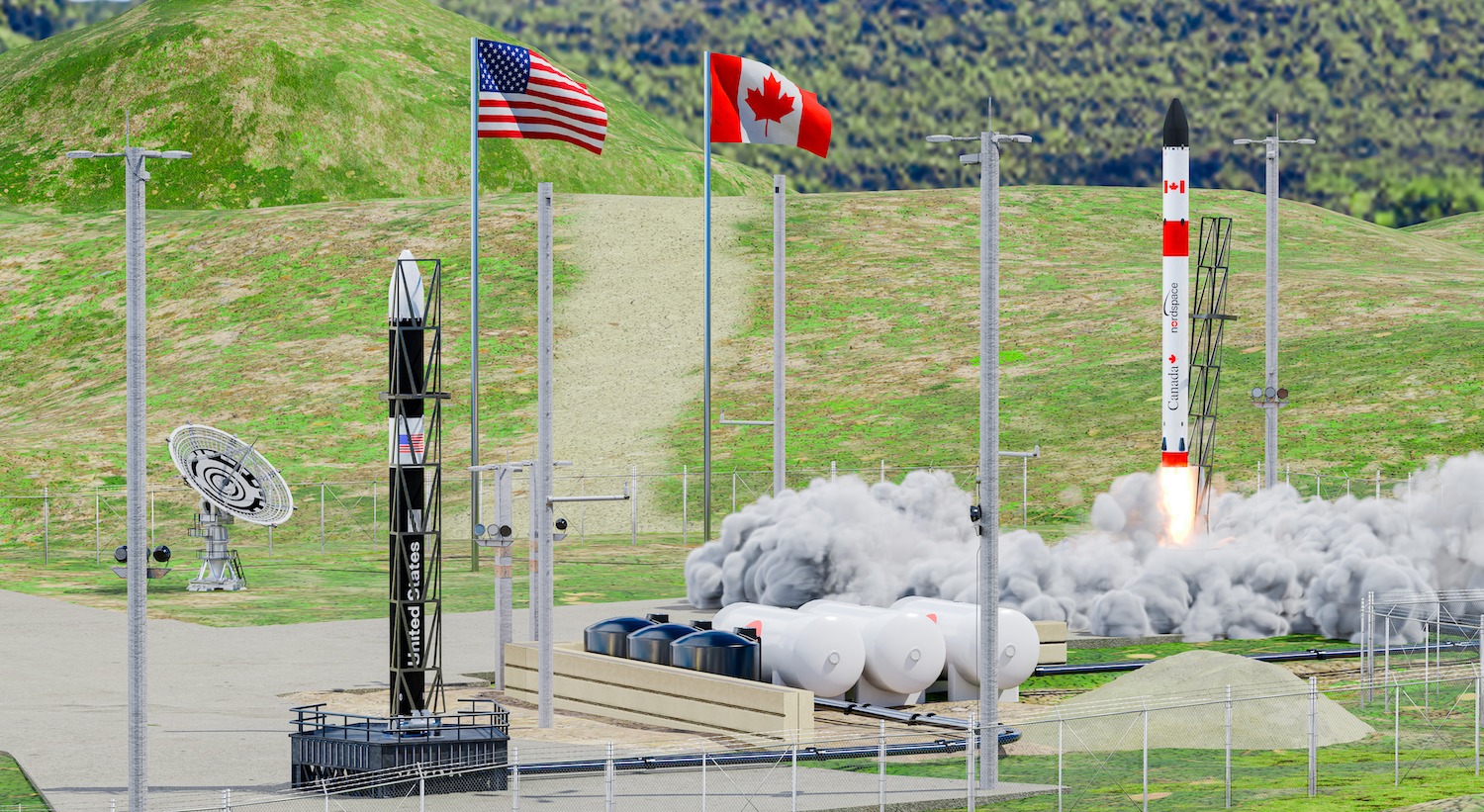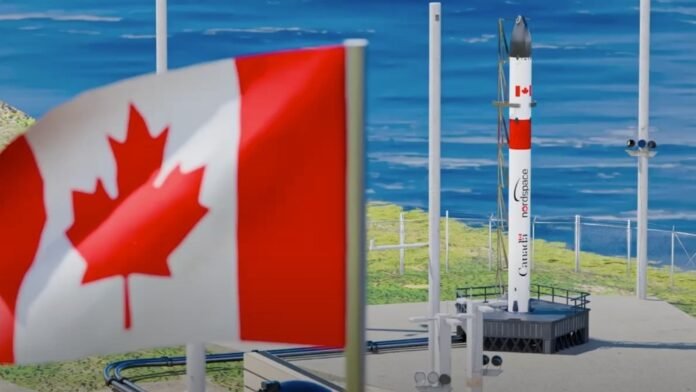At a coastal site on the southeastern tip of Newfoundland, a brand-new rocket is nearly ready for flight. It was built entirely in Canada, fueled by kerosene and ambition, and spearheaded by a startup with its eyes on orbit. NordSpace is on track to conduct the first commercial liquid-fueled rocket launch in Canadian history — a suborbital shot scheduled for mid-August.
Rooting for the company behind the scenes is ProtoSpace, an aerospace manufacturing arm of Canadian firm Protocase, boasting “high-velocity” production and delivery of specialized space-grade components within two to three days, compared to industry norms of weeks or months.
Together, NordSpace and ProtoSpace represent a growing push to establish a domestic space industry in Canada that supports its own launch infrastructure, source manufacturing and orbital launch capability.
“Canada has played a long and important role in space,” NordSpace CEO and co-founder Rahul Goel told Space.com. “We’ve kind of mainly been playing a participatory role instead of a leadership one, and one of the biggest gaps in our value chain has always been launch,” he said.
Despite a storied history in robotics and space contributions — Canadarm, Dextre, RADARSAT and others — Canada has never launched anything to orbit from its own soil. NordSpace aims to change that.
NordSpace’s Taiga rocket isn’t going to reach orbit when it launches in August, but it’s a big step toward the company’s ultimate goal. Taiga is a small, liquid-fueled, hypersonic launch vehicle capable of carrying just over 110 pounds (50 kilograms) above the Karman Line. This summer’s shakedown cruise will be a low-altitude demonstration of Taiga’s capabilities.
“We get this win under our belts, and then we’ll attempt the second flight later this year or early next year to demonstrate its full capability,” Goel said.
That capability extends beyond just NordSpace’s launch vehicle. Part of Taiga’s success will point to a larger accomplishment NordSpace is hoping to achieve: Proving that it’s possible to launch a Canadian-built rocket, carrying Canadian payloads, from a Canadian spaceport.
Slow and steady
NordSpace has set what it regards as a steady, realistic pace for itself as it keeps its eyes on orbit. The company plans to follow this summer’s launch with a second Taiga flight in 2026 — a full hypersonic “Space Shot” mission. After that comes Tundra, an orbital vehicle comparable to Rocket Lab’s Electron rocket, which will be capable of launching 1,100 pounds (500 kg) to low-Earth orbit (LEO) and 550 pounds (250 kg) to sun-synchronous orbit. NordSpace hopes to debut Tundra in late 2027.
NordSpace’s Atlantic Spaceport Complex (ASX) in Newfoundland is located at 46 degrees latitude, allowing the range to potentially support a wide variety of launch inclinations. Goel says the company will launch Tundra as a pathfinder vehicle within the small payload market for a couple of years while simultaneously developing an even bigger rocket.
“By the end of the decade, we’re doing at least one launch a month,” Goel said. “We think that’s a lot more reasonable than new companies coming out of the gate who say they’re going to launch 50 times a year.”
In the 2030s, NordSpace plans to scale to Titan, a 5-ton-to-LEO reusable rocket aimed at matching the capabilities of launch vehicles like SpaceX’s Falcon 9.
“We’re really treating Canada as a pathfinder market,” Goel said. He estimates ASX can support several launches a year, just with Canadian payloads. In fact, Canadian payloads — specifically, national security payloads — are one of the driving motivations for Canada to support its own orbital launch capabilities.
“They’re the ones who really are sending the strongest demand signals,” Goel said, referring to Canada’s equivalent to the Department of Defense. He added that the gist of the message he’s hearing is, “We’re not excited about relying on foreign partners, no matter how close they may be, to get our assets to space…We have all these payloads that kind of just sit on shelves. Let’s just toss them on your rocket and get them up there.”
Goel said that NordSpace could be positioned to address an international launch market sometime “in the tail end of the early 2030s.”
Manufacturing at the speed of innovation
NordSpace is developing all of its rockets in-house, including the engines powering them. Taiga’s first-stage Hadfield engines and second-stage Garneau engines are 3D printed, regeneratively cooled, additively manufactured and tested at NordSpace’s own facility, two hours east of its headquarters.
While NordSpace is building its rockets, ProtoSpace is helping to speed up Canadian innovation and manufacturing to support a budding rocket and aerospace industry.
At first, Goel assumed NordSpace would need to import a lot. Then he and his team looked around. “When we started NordSpace, we had no idea that we’d identify — 10 minutes within our radius — about five companies that are providing mission-critical components to the engine assemblies for Raptor and Merlin,” Goel said.
Merlin engines power SpaceX‘s Falcon 9 and Falcon Heavy launchers, and Raptors power the company’s new Starship rocket.
Doug Milburn serves as chairman for ProtoSpace, which specializes in “high-velocity mass custom manufacturing” — known for delivering certified ITAR (International Traffic in Arms Regulations) and Canadian Goods Program-compliant aerospace parts in days instead of weeks.
“Those who win in innovation are those who get velocity,” Milburn explained to Space.com. He warns companies of hampering their own progress by stifling engineering teams’ momentum with multiple purchasing routes for an increasing amount of smaller, more specialized parts required for whatever project they take on.
ProtoSpace serves the entire private space ecosystem. The company’s philosophy is “long lead times extend your projects, complicates scheduling, and drains your focus and momentum. Slower projects cost more, and this is a drag on your organization’s overall success,” according to the ProtoSpace website.
“The minute you start getting in the way of your development team’s velocity, you’ve just thrown a wrench into things; you’ve upped your costs and you’ve dropped your odds of success,” Milburn explained. “We play for a bunch of the big guys,” he said, “and then we have these incredibly exciting startups like Rahul and his company.”
Rethinking regulation
Milburn says Canada’s aerospace sector is more extensive than it’s given credit for. “The bulk of what’s done can get done in Canada,” he said. But getting a rocket off the ground in Canada isn’t just about manufacturing and assembling the parts. NordSpace and companies like ProtoSpace must navigate a regulatory system that’s still finding its footing.
“If they’re going to regulate private space the way that they regulate general aviation in Canada, then the thing’s just dead in the ground,” Milburn said. He thinks the “we can’t do this in Canada” sentiments he hears from regulators are the “natural reaction in a country that is naturally risk averse.” The nation is also lacking some of the most critical regulatory components to allow companies like NordSpace to move forward with progress.
Canada doesn’t yet have a fully realized launch licensing system. So, NordSpace chose to push the envelope deliberately — applying for a commercial orbital-class license even for its suborbital demo.
Goel says his company wanted to force its Taiga launch to be regulated under commercial space launch requirements. While this requires significantly more boxes to check for the upcoming flight than would otherwise be necessary for a suborbital launch, NordSpace wanted to make sure all parties involved would have a confident understanding of the regulatory procedures. “So by the time in 2027 when we’re ready for orbital, we’re not stuck on the pad because the regulators aren’t able to actually regulate this thing, even if they wanted to,” Goel said.

Goel agrees with Milburn’s “risk averse” observation of Canada, but hopes NordSpace can help change that. “Maybe we can tweak that over time, especially with the success of launch,” Goel said. “I think that’ll send a strong signal.” He hopes the signal resonates throughout the country, but doesn’t expect the gospel to spread all at once.
“In Canada, [if] you mentioned to anybody that you’re building a rocket engine and you want to test it on their farm or on an industrial plot, they’re just going to have an allergic reaction to it right away,” Goel said. “We got kicked out of every location you can imagine.”
Goel ultimately purchased an old mine for NordSpace’s propulsion test site, and hopes it will one day be shared with other companies.
NordSpace isn’t building for a space industry of one. Its 150-acre (60 hectares) ASX coastal site will include two launch pads, one specifically designated for third-party use.
“We’re building two pads… one to offer to somebody else,” Goel said. “Ideally,” he added, “a domestic launch partner, but also foreign [partners], too.”
“It’s very challenging,” he said, reflecting on his efforts to bring NordSpace to this point. “You have an entrepreneur who’s a crazy kind of space geek his whole life, spent the last decade acquiring his own small fortune…but getting to this point right now, investing it all back in Canada is really the only way.”
“I consider it a tremendous responsibility to create infrastructure that other Canadians can leverage,” Goel said. “It’s also a good sales opportunity for us.”

Space agency starter pack
Unlike in the U.S., Canadian companies aren’t bound by ITAR (International Traffic in Arms Regulations), making NordSpace’s business model and technology attractive to global markets, according to Goel.
“In a lot of ways, we can copy and paste this model to other nations that are looking to develop their own sovereign launch capabilities and sovereign space programs, but don’t have the technical capability, manufacturing and industrial base,” he said.
The NordSpace CEO says the company is already in talks with nations like Kenya, the Philippines, Peru and others.
“I don’t want this to seem like a story where a bunch of people did something that seemed impossible,” Goel said. “This is possible.”
“This is not a multi-billion-dollar project,” he added. “We can do this for sub-$100 million easily.”
Goel sees NordSpace as more than a business — it’s a national statement.
“I’m really trying to make sure that this is a story that doesn’t just have the economic, security and environmental impact that we hope it does, but it really becomes a symbol for Canada, for what we can do in all sorts of domains, not just space,” Goel said. “I think space has this ability to inspire unlike anything else.”


